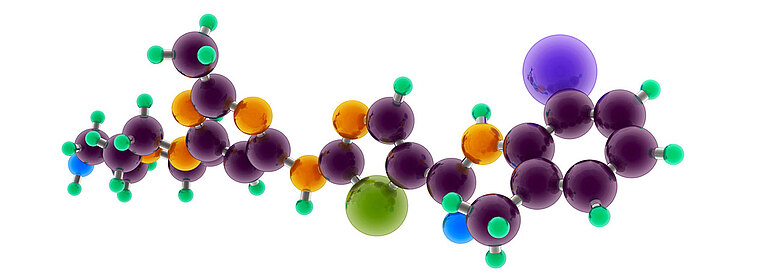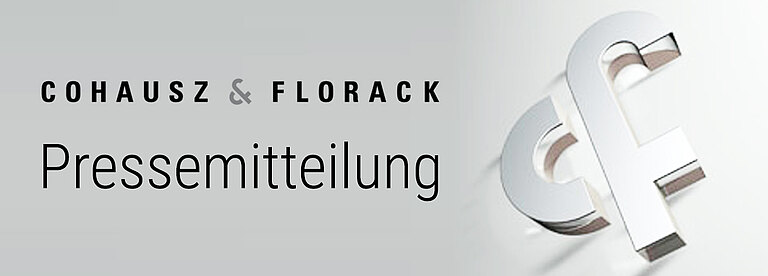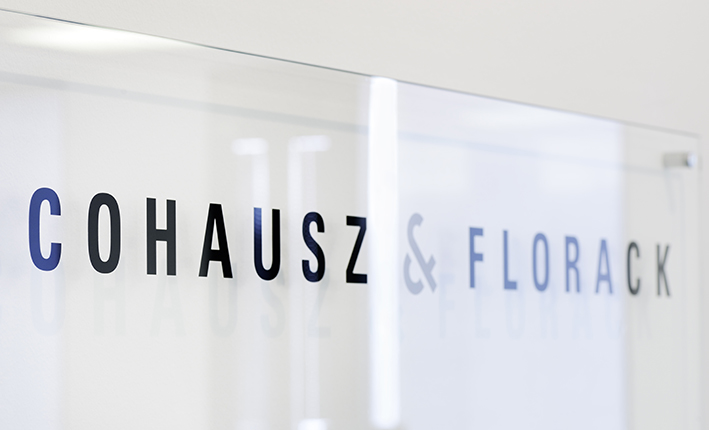The patent was the compound patent for the blockbuster anti-cancer drug dasatinib (Sprycel), with an annual turnover of more than $1 billion. This chapter sheds light on the reasons for the decision, as well as potential future implications.
Background – opposition proceedings
During the first-instance opposition proceedings, the patentee narrowed down the claims to a single claim directed at the compound dasatinib and its salts (the patentee’s second auxiliary request). The novelty of dasatinib was not disputed. The whole case hinged on whether the patent application as filed made it plausible for a skilled reader, at the filing date, to identify that dasatinib possessed the alleged technical effect of being a potent protein tyrosine kinase inhibitor, and to what extent the patentee could rely on post-published evidence to prove this effect.
The underlying patent application was directed to an extremely broad group of compounds (Formula I) which were purported to have inhibitory activity towards different types of protein tyrosine kinase (PTK). The application disclosed in exemplified Form 580 characterised chemical compounds, one of which was dasatinib. The specification of the application generically described several assays as being suitable for the assessment of the protein kinase inhibitory activity. In addition, it contained the generic statement that “Compounds described in the following
Examples have been tested in one or more of these assays, and have shown activity”. However, the application as filed included no activity data in respect of any of the compounds exemplified.
The EPO Opposition Division revoked the patent based on lack of inventive step, essentially a lack of plausibility in the patent application as filed for the claimed technical effect.
While the patent application as filed contained no activity data, the patentee had submitted supporting, post-published experimental evidence of protein kinase inhibition during the prosecution of the application. Such post-filed evidence is usually accepted and taken into account by the EPO in support of a technical effect disclosed in the patent application, as long as the application as filed renders the demonstrated technical effect plausible (see Case Law of the Boards of Appeal, 8th edition, ID4.6; T1329/04, Point 12 of the Reasons; and T1043/10, Point 12).
However, in Sprycel the Opposition Division was not convinced that the application as filed had met this plausibility threshold. Therefore, it did not accept or take into account the post-filed evidence demonstrating dasatinib’s potent kinase inhibitory activity. Consequently, the opposition division reformulated the objective technical problem underlying the patent to merely be the provision of alternative low molecular compounds. The proposed solution (ie, the claimed compound dasatinib and its salts) was considered to be a mere enrichment of the pool of known and synthesised organic compounds, which was not considered to be inventive.
Appeal proceedings
The patentee, BMS, appealed the first-instance decision revoking its patent. BMS’s main request on appeal was identical to the second auxiliary request filed during the first instance (ie, the single picture claim to the compound dasatinib and its salts). Consequently, the whole appeal proceedings focused on the issue of whether the application as filed per se had rendered the claimed technical effect plausible such that the post-published data that BMS had filed and relied on during examination of the application could be taken into account when determining the technical effect and formulating the objective technical problem when assessing inventive step under the EPO’s problem-and-solution approach.
The patentee essentially argued that the patent application as filed, and especially the summary statement that all compounds of the invention had been tested and shown to be active in one or more of the assays described in general terms in the application, made it credible at the time of filing that dasatinib had protein kinase inhibiting activity. To further support this, the patentee filed expert declarations explaining that the effect was plausible based, among other things, on structure activity relationship analyses. In addition, a declaration by an inventor was filed as evidence that BMS had made and tested the activity of the compounds before filing, all of which had shown activity. The patentee took the position that it would not be a requirement under the European Patent Convention for an application to include data or experimental proof. Also, there would have been no a priori reasons to doubt the general statement in the application as filed that the compounds had been tested and had shown activity. The plausibility standard would have been met and the post-filed activity data should thus be considered for the assessment of inventive step. The patentee further argued that the burden of proof for establishing doubts as to the plausibility of claimed technical effects rested on the opponents or the opposition division. The opponents argued in response that the application had not made it plausible on the filing date that it had indeed provided a solution to the problem it purported to solve. In the case at issue, the broad genus and extremely wide range and large number of exemplified compounds disclosed in the application would make it a priori implausible that these would all be useful as PTK inhibitors, in the absence of any activity data or more specific details as to the respective activities. For active drug substances, it would need to be considered that structural modifications were a priori expected to disturb the pharmacological activity in the absence of an established correlation between structure and function. According to the opponents, this was exacerbated by the fact that the application did not contain a single piece of experimental evidence for any compound in any assay, nor had any threshold level for activity been given. Therefore, the generic summary statement that all compounds of the invention had been tested and had shown to be active in one or more of the assays disclosed in the application would have been understood by the skilled person as a mere unsupported assertion. In the absence of any data, this would be insufficient to render the claimed technical effect plausible. They further relied on specific post-published evidence demonstrating that certain compounds exemplified in the application were in fact inactive. Thus, the summary statement would also be factually incorrect.
Stakeholders and representatives of both generics and innovator companies closely followed the appeal proceedings. It was clear from the outset that this case had the potential to dramatically affect the patentability of pharmaceutical and life sciences inventions in Europe by defining the plausibility threshold required to rely on post-filed data in support of inventive step. The importance of the case was underlined by the European Federation of Pharmaceutical Industries and Associations filing third-party observations in favour of the patentee during the written appeal proceedings.
Outcome
In Sprycel (T488/16) the Board of Appeal confirmed the first-instance plausibility ruling and upheld the EPO Opposition Division decision to revoke BMS’s patent based on lack of inventive step.
The board did not consider the generic summary statement in the application that compounds had been found to have activity to be sufficient to meet the EPO’s plausibility standard. The application would not have rendered it credible that the technical problem that the application purports to solve, namely providing PTK inhibitors to treat disorders or diseases associated therewith, had been solved at the effective filing date in the absence of verifiable technical evidence. In Point 4.5 of the reasons, the board observed that:
The assays are generically described and refer to the ‘protein kinase of interest’ and the ‘test compound’ or ‘compounds of interest’ to be assayed. No further details are provided in this respect. Nor are any results, for example IC or Ki values, provided. Indeed, there is no evidence at all in the application as filed that shows that any of the compounds falling within the scope of formula I, let alone dasatinib, is active as an inhibitor for any of the specific protein tyrosine kinases, except a mere assertion on page 50, lines 1 to 2 with (sic) reads that ‘Compounds described in the following Examples have been tested in one or more of these assays and have shown activity’. No further information is provided. No individual values or range of values are given. No information as to whether the observed ‘activity’ is suitable for the intended use, i. e. the treatment of a number of diseases and disorders, is provided.
The board found it to be inherently unlikely for any skilled person that all of the compounds recited in the application, or at least a substantial number, would exhibit the alleged PTK inhibitory activity. The board pointed to the large number of compounds, the high degree of structural variation and the absence of known structure-activity relationships for the compounds. The board clarified that there was also no evidence on file showing that, at the date of filing, the skilled person was in the possession of common general knowledge which, even in the absence of data, would render it plausible that the compounds of the invention – particularly dasatinib – could plausibly be expected to show PTK inhibitory activity. It was further reasoned that the generic summary statement in the application as to the alleged activity of the compounds could not be read in the sense that all compounds of the examples had been tested and shown activity. Such a reading would conflict with the patentee’s post-published evidence, according to which certain compounds exemplified in the application lacked activity, at least below certain concentrations.
Regarding the patentee’s argument that the burden of proof was on the opponents to show that the application did not solve the technical problem it purported to solve, the board noted that the opponents had provided technically sound and persuasive arguments as to why the alleged effect had not been made plausible from the disclosure of the application as filed. This would be sufficient to raise doubts as to whether the technical problem had already been solved at the filing date, particularly by dasatinib. In such a situation, the burden of proof was on the patentee to show that the technical effect was plausible at the time of filing.
As to the patentee’s argument that the summary statement in the application was sufficient to meet the EPC’s low plausibility threshold (which would not have required experimental proof to be satisfied in the absence of any substantiated doubts), the board clarified that while “it is not always required to include experimental data or results in an application (T578/06, Point 13), it is, however, a conditio sine qua non that it is shown that the technical problem underlying the invention was at least plausibly solved at the filing date”.
The board held that in Sprycel the nature of the invention was such that it relied on a technical effect which was “neither self-evident nor predictable or based on a conclusive theoretical concept”. In such a case at least some technical evidence is required already in the application as filed to make it plausible that a technical problem has been solved.
As the application as filed did not include such technical evidence, the plausibility threshold was not met and the board decided in line with another EPO decision (T1329/04–Factor-9/ JOHN HOPKINS) that post-filed evidence could not be taken into account to corroborate the technical effect relied on for arguing inventive step. Thus, the board refused to take dasatinib’s PTK inhibitory activity into account when assessing inventive step. Siding with the first-instance decision, the board reformulated the objective technical problem as the mere provision of a further chemical compound, which was not considered to be inventive.
Future implications, lessons learned and practical advice
It remains to be seen whether other boards of appeal will follow the strict plausibility threshold that the EPO Board of Appeals applied in Sprycel. So far, only one board of appeal decision has cited Sprycel but found it not applicable to the facts at issue (T227/14, September 12 2017, Point 5.2.2). It can be expected that for cases with facts similar to those underlying Sprycel, the plausibility standards set out in Sprycel will also be applied by other boards of appeal. Thus, applicants and patentees must be aware of this decision and its implications.
It has been a common filing strategy in drug development to file broad-base applications early on, covering a broad genus and exemplifying numerous compounds before a lead compound is chosen. Any delay in filing such a base application bears the risk that relevant information is published rendering the invention non-patentable. In pursuing this filing strategy, post-filed experimental data is often used during the prosecution of the application before the EPO to demonstrate inventive step.
Following Sprycel, it seems that in cases where the technical effect relied on is “neither self-evident nor predictable or based on a conclusive theoretical concept” it may be necessary to include actual data at the time of filing to make the asserted technical effect plausible. Otherwise, the applicant might later be unable to rely on post-filed data. The mere inclusion of summary statements alleging a technical effect without specifying or quantifying it is insufficient to meet the plausibility threshold of Sprycel.
Not including available data in a patent filing in an attempt to preserve confidentiality may backfire, rendering the invention implausible and depriving the applicant of the possibility to rely on post-filed evidence to further substantiate a claimed technical effect.
For companies that are considering filing patent applications in pharmaceuticals or life sciences, it is recommended at the time of filing to include as much verifiable experimental data or other evidence (eg, structure-activity relationships or common general knowledge) as possible in the application to meet the plausibility threshold. For applicants that do not wish to reveal too much about lead compounds, at least the inclusion of a specific assay description and statements as to which numerical threshold levels of activity were achieved is advisable.
At national level, the plausibility threshold applied in nullity proceedings by the competent national courts varies between European countries. Following established case law of the German Federal Supreme Court, for example, it is likely that a German court in national German nullity proceedings would have readily considered the available post-filed data in support of an inventive step. In fact, there is a good chance that – in contrast to EPO proceedings – BMS’s patent would have been upheld by the German Federal Patent Court in national nullity proceedings. Accordingly, in certain cases it may also be prudent for risk mitigation to consider filing parallel national applications in Europe (eg, Germany) for commercially important technologies.
Sprycel adds another valuable tool to the opponents’ arsenal of possible patent attacks and it can be expected that the plausibility test established in this decision will be relevant for numerous pending and future opposition proceedings in the pharmaceuticals and life sciences fields.
This article first appeared in IAM Life Sciences: Key issues for senior life sciences executives 2018, a supplement to IAM, published by Globe Business Media Group - IP Division. To view the guide in full, please go to www.IAM-media.com.
Picture credits: serge01-fotolia.com





